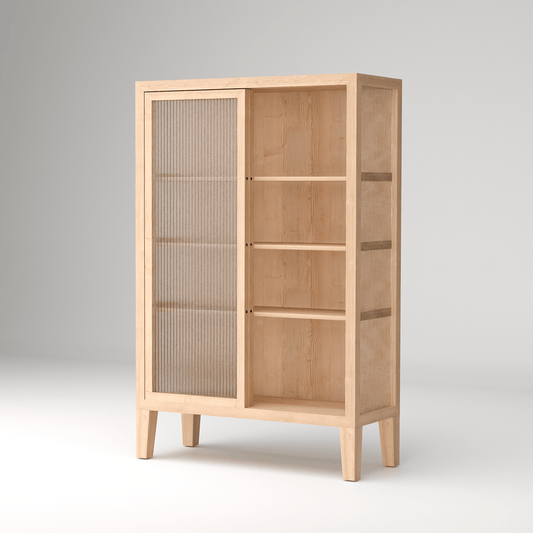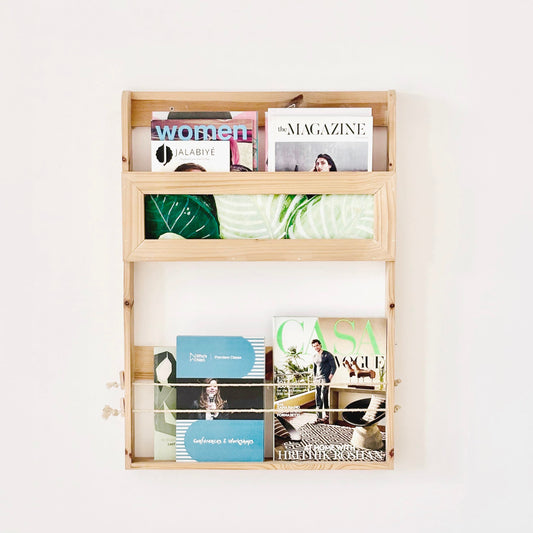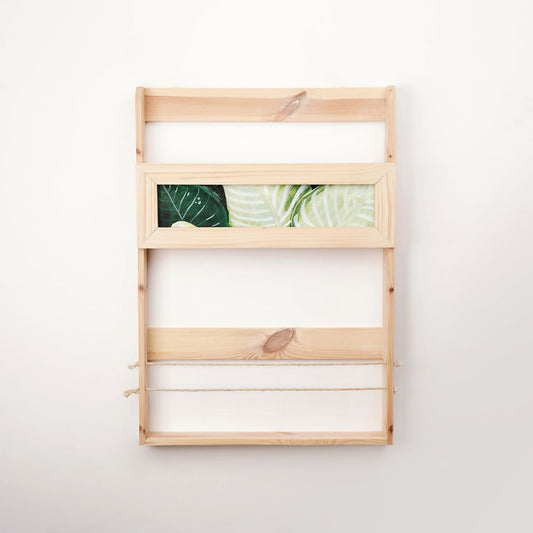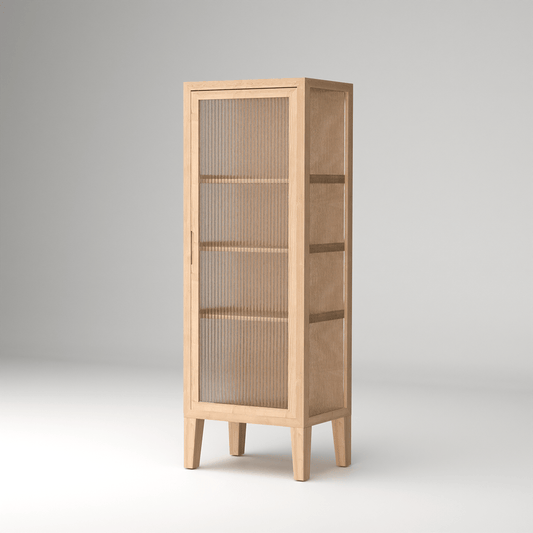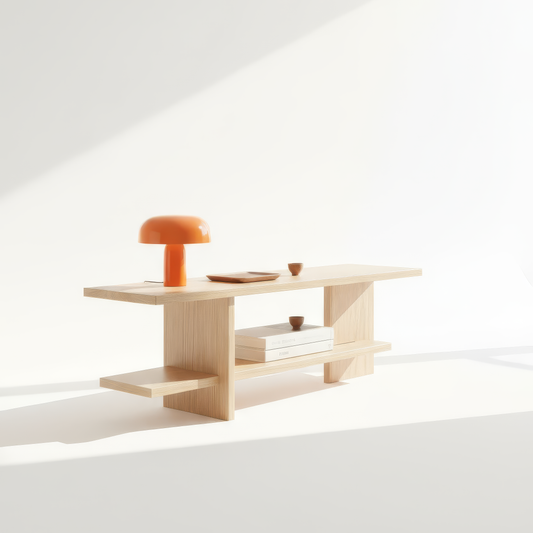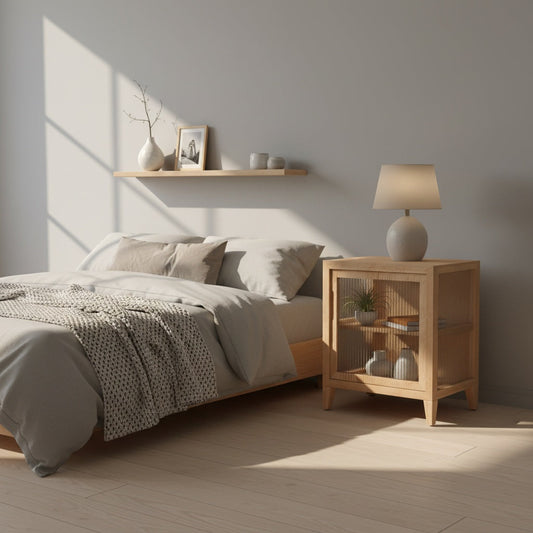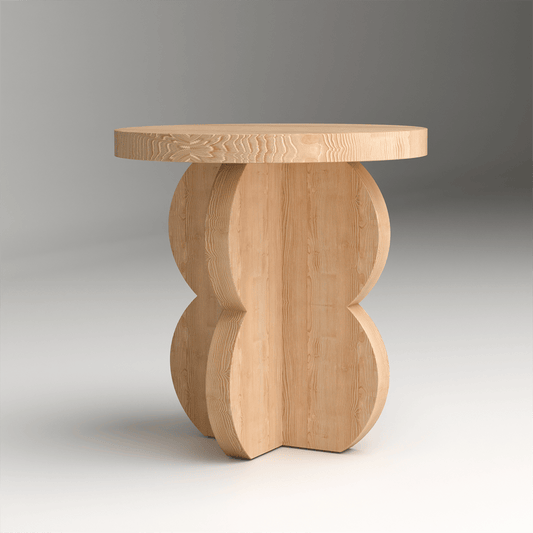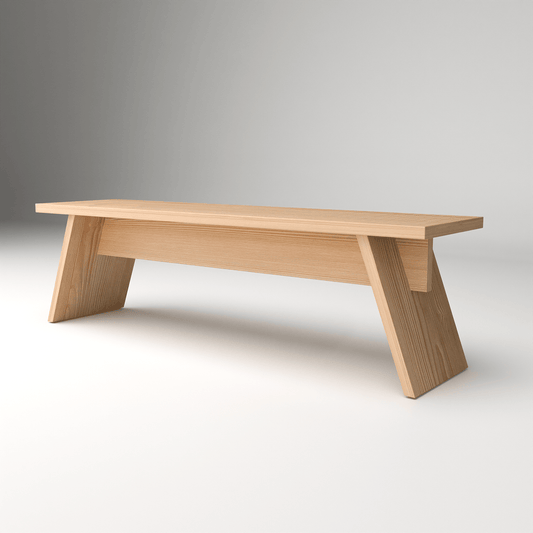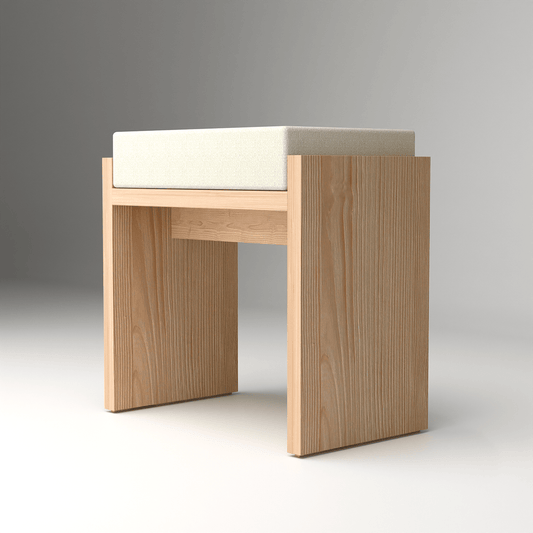The modern home is a dynamic environment where spaces must serve multiple purposes throughout the day, seasons, and life stages. Convertible furniture emerges as the perfect solution for this reality, offering pieces that transform to meet changing needs while maintaining the aesthetic integrity and functional excellence that define quality design. This adaptability represents more than convenience—it embodies a philosophy of thoughtful living that maximizes both space and satisfaction.
At A Good Life, we understand that life is constantly evolving, and our furniture should evolve with us. Our handcrafted pine wood convertible pieces demonstrate how traditional craftsmanship can create innovative solutions that adapt to modern lifestyles while maintaining the natural beauty and sustainability that define conscious living.
Understanding the Need for Adaptability
Modern living patterns create unique demands for furniture that can transform to serve different functions as circumstances change throughout days, seasons, and life stages.
Dynamic Living Patterns
Daily Transitions: Homes that must shift from work spaces to entertainment areas to rest zones throughout each day.
Seasonal Changes: Living spaces that need to accommodate different activities and comfort needs as seasons change.
Life Stage Evolution: Furniture that can adapt as families grow, children mature, and lifestyle priorities shift.
Social Flexibility: Spaces that must accommodate both intimate family time and larger social gatherings.
Economic Adaptability: Furniture solutions that can adapt to changing economic circumstances and housing situations.
Space Efficiency Demands
Urban Density: City living requires maximum functionality from minimal square footage.
Multi-Purpose Rooms: Open floor plans where single spaces must serve multiple functions simultaneously.
Temporary Living: Rental situations and frequent moves that require adaptable rather than permanent solutions.
Storage Limitations: Homes with limited storage that need furniture to serve multiple roles efficiently.
Budget Consciousness: Economic pressures that make versatile furniture more valuable than single-purpose pieces.
Our Minimalist Wooden Nesting Tables exemplify convertible design principles, providing multiple surface options when needed for entertaining or work while nesting together to maintain open floor space during daily living.
Design Principles for Convertible Furniture
Creating furniture that successfully transforms between different functions requires careful attention to engineering, aesthetics, and user experience.
Transformation Mechanisms
Intuitive Operation: Conversion processes that are easy to understand and execute without complex instructions or tools.
Smooth Transitions: Mechanisms that operate smoothly and quietly, making transformations pleasant rather than disruptive.
Secure Positioning: Locking systems that ensure furniture remains stable and safe in all configurations.
Durability Engineering: Hardware and joints designed to handle repeated transformations over many years.
Maintenance Accessibility: Mechanisms that can be easily maintained and repaired to ensure long-term functionality.
Aesthetic Consistency
Visual Harmony: Furniture that looks intentional and beautiful in all configurations, not just one primary form.
Material Integration: Using materials that enhance rather than compromise the transformation process.
Proportion Balance: Maintaining pleasing proportions regardless of which configuration is in use.
Style Coherence: Design elements that remain consistent across all functional configurations.
Finish Quality: Surface treatments that look excellent from all angles and in all positions.
Seating Transformation Solutions
Convertible seating represents one of the most versatile categories of transformable furniture, addressing the varied seating needs of modern homes.
Multi-Configuration Seating
Modular Systems: Individual seating components that can be arranged as chairs, loveseats, sectionals, or conversation groupings based on immediate needs.
Expandable Seating: Benches and settees that can accommodate different numbers of people through adjustable or removable components.
Height-Adjustable Options: Seating that can serve as dining chairs, desk chairs, or lounge seating through height adjustment mechanisms.
Reclining Variations: Seating that transforms from upright task seating to relaxed lounging positions.
Seating-to-Sleeping Conversions
Sofa Beds: Traditional convertible seating that transforms into sleeping surfaces for guests or studio living.
Daybed Configurations: Seating that can serve as both sofa and single bed depending on cushion arrangement and positioning.
Ottoman Beds: Storage ottomans that unfold into single sleeping surfaces for unexpected guests.
Bench Sleeping: Long benches that can accommodate overnight guests with appropriate cushioning.
For versatile seating that adapts to different needs, consider our Minimalist Solid Wood Bare Edge Bench. This piece can serve as additional dining seating, living room seating, bedroom furniture, or even a coffee table depending on the situation and cushioning used.
Table Transformation Systems
Tables that can adapt to different functions and sizes provide exceptional value in homes where space and versatility are priorities.
Size-Adjustable Tables
Extension Systems: Dining tables that expand to accommodate guests and contract for daily family use.
Drop-Leaf Designs: Traditional mechanisms that allow tables to provide full surfaces when needed and compact profiles when not.
Nesting Configurations: Multiple tables that can be used separately or combined for larger surface areas.
Height Adjustment: Tables that can serve as coffee tables, dining tables, or standing work surfaces through height modification.
Function-Shifting Tables
Desk-to-Dining: Work surfaces that transform into dining tables for meals and entertaining.
Console-to-Table: Narrow console pieces that expand into full dining or work surfaces.
Storage-to-Surface: Tables that reveal or conceal storage compartments based on current needs.
Display-to-Function: Tables that can showcase decorative items or provide clear work surfaces as needed.
Storage Conversion Solutions
Convertible storage furniture maximizes organization capacity while adapting to changing storage needs and space requirements.
Expandable Storage Systems
Modular Growth: Storage systems that can be expanded or contracted based on changing needs and available space.
Seasonal Adaptation: Storage configurations that can be modified for seasonal clothing, decorations, or equipment changes.
Accessibility Variation: Storage that can be configured for different user heights and mobility needs.
Security Options: Storage systems that can provide open display or secure concealment as circumstances require.
Multi-Function Storage
Seating Storage: Storage pieces that can serve as seating when needed and pure storage when not.
Display Storage: Units that can showcase collections or provide concealed organization based on current needs.
Work Storage: Storage systems that can support office functions or provide general household organization.
Entertainment Storage: Media storage that can adapt to changing technology and entertainment needs.
Our Solid Wood Multipurpose Shelf with Drawer demonstrates convertible storage principles, providing both open display space and concealed storage that can adapt to different organizational needs while maintaining the natural beauty of pine wood construction.
Work-Life Integration Solutions
The rise of remote work has created new demands for furniture that can seamlessly transition between professional and personal functions.
Workspace Transformation
Hidden Offices: Furniture that conceals work materials and technology when not in use, maintaining residential aesthetics.
Expandable Workstations: Compact pieces that can expand into full work environments when needed.
Multi-User Adaptation: Work furniture that can accommodate different users and work styles throughout the day.
Technology Integration: Convertible pieces that can reveal or conceal technology and cables based on current use.
Professional-Personal Balance
Meeting-to-Dining: Tables that can serve professional video calls and family meals with equal effectiveness.
Storage-to-Filing: Organization systems that can handle both household items and professional documents.
Display-to-Privacy: Furniture that can showcase personal items or maintain professional backgrounds as needed.
Lighting Adaptation: Work furniture with lighting that adjusts for professional tasks or ambient home lighting.
Seasonal Adaptability Features
Convertible furniture that responds to seasonal changes helps homes remain comfortable and functional throughout the year.
Climate Response
Ventilation Options: Furniture with features that can be opened for summer cooling or closed for winter warmth retention.
Insulation Adaptation: Pieces that can provide additional insulation during cold months or enhanced cooling during warm periods.
Humidity Management: Convertible features that help manage indoor humidity levels seasonally.
Light Optimization: Furniture that can maximize natural light during dark months or provide shade during bright seasons.
Activity Adaptation
Indoor-Outdoor Transition: Furniture that can move between indoor and outdoor use as weather permits.
Holiday Configuration: Pieces that can be reconfigured to accommodate seasonal celebrations and gatherings.
Storage Rotation: Convertible storage that facilitates seasonal clothing and equipment rotation.
Entertainment Scaling: Furniture that can adapt to different seasonal entertainment patterns and guest numbers.
Technology Integration in Convertible Design
Modern convertible furniture increasingly incorporates technology to enhance transformation capabilities and user convenience.
Automated Transformation
Motorized Mechanisms: Electric systems that make furniture transformation effortless and accessible to users with mobility limitations.
Remote Control: Wireless controls that allow furniture transformation without physical manipulation of heavy components.
Sensor Integration: Smart systems that can detect usage patterns and suggest optimal configurations.
App Control: Smartphone integration that allows furniture control and configuration scheduling.
Smart Adaptation
Usage Learning: Furniture that learns user preferences and automatically suggests or implements optimal configurations.
Environmental Response: Convertible pieces that automatically adjust based on room temperature, lighting, or occupancy.
Calendar Integration: Furniture that can prepare for scheduled activities by automatically configuring appropriately.
Voice Control: Integration with smart home systems for hands-free furniture transformation.
Maintenance and Longevity Considerations
Convertible furniture requires special attention to maintenance due to the complexity of transformation mechanisms and increased wear from multiple configurations.
Mechanism Care
Regular Lubrication: Keeping moving parts operating smoothly with appropriate lubricants and maintenance schedules.
Hardware Inspection: Checking screws, hinges, slides, and other hardware regularly for wear and proper tightness.
Cleaning Protocols: Proper cleaning techniques that don't damage mechanisms or interfere with smooth operation.
Professional Service: Establishing relationships with repair services that understand convertible furniture mechanisms.
Durability Planning
Quality Investment: Choosing convertible pieces with robust construction that can handle frequent transformation.
Warranty Considerations: Understanding warranty coverage for mechanisms and transformation components.
Replacement Parts: Ensuring availability of replacement parts for key mechanism components.
Upgrade Potential: Choosing systems that can be upgraded or improved as technology advances.
Budget-Conscious Convertible Strategies
Creating adaptable living spaces doesn't require expensive custom convertible furniture or complete room overhauls.
DIY Conversion Solutions
Modular Arrangements: Using standard furniture pieces in creative combinations that provide convertible functionality.
Accessory Adaptation: Adding components to existing furniture to create convertible capabilities.
Seasonal Reconfiguration: Rearranging existing furniture seasonally to create different functional zones.
Multi-Purpose Use: Training family members to use furniture pieces for multiple functions safely and effectively.
Strategic Investment
Priority Identification: Focusing convertible furniture investment on the most frequently transformed spaces and functions.
Quality Focus: Investing in fewer, higher-quality convertible pieces rather than many cheaper alternatives.
Phased Implementation: Building convertible furniture collections gradually over time as budget allows.
Versatility Maximization: Choosing pieces that can serve the greatest number of different functions and configurations.
The Future of Convertible Furniture
Looking ahead, convertible furniture will likely become even more sophisticated and responsive to changing lifestyle needs and technological capabilities.
Emerging Technologies
AI Integration: Smart furniture that learns user patterns and automatically optimizes configurations for different activities and times.
Advanced Materials: New materials that enable more creative and durable transformation mechanisms.
Miniaturization: Smaller, more powerful mechanisms that enable convertible features in previously impossible applications.
Sustainability Integration: Convertible furniture designed for complete recyclability and minimal environmental impact.
Innovation Directions
Biometric Adaptation: Furniture that automatically adjusts to individual users based on biometric recognition.
Health Integration: Convertible features that promote physical health through ergonomic adaptation and movement encouragement.
Community Sharing: Convertible furniture designed to support sharing economy models and community living arrangements.
Predictive Adaptation: Furniture that anticipates needs based on calendar integration, weather forecasts, and usage patterns.
Convertible furniture represents the perfect solution for modern living's dynamic demands, providing the adaptability essential to making the most of our homes while maintaining the beauty and sustainability that make living spaces truly satisfying. By choosing furniture that can transform to meet changing needs, we create homes that are both highly functional and deeply responsive to our evolving lifestyles.
The key to successful convertible furniture lies in understanding that good design should enhance rather than complicate daily life. When furniture can adapt seamlessly to different needs and circumstances, it provides exceptional value while reducing the need for multiple single-purpose pieces.
As our lives continue to become more dynamic and space-conscious, convertible furniture will play an increasingly important role in helping us create homes that are perfectly adapted to our changing needs, regardless of their size or configuration.


